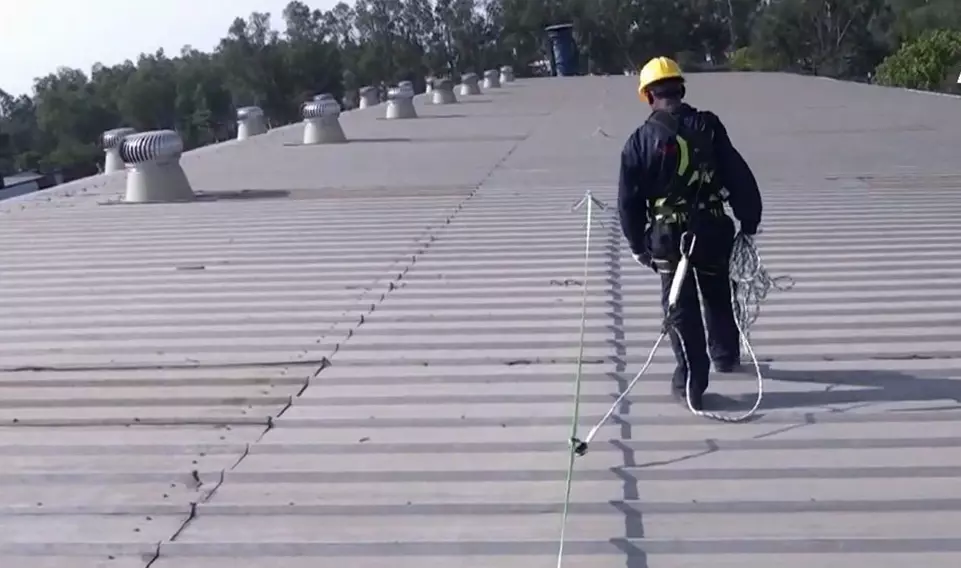
Introduction to anti-fall horizontal lifeline
Anti-fall horizontal lifeline, also known as horizontal safety rope or horizontal safety line, is an important safety equipment for the protection of high-altitude workers. Its main function is to connect the workers to the fixed point to prevent falling accidents due to slipping, falling, etc., and provide safety protection for high-altitude operations.
1. Main compositionAnti-fall horizontal lifeline usually consists of the following main parts:
Wire rope: As the main load-bearing component, it has the characteristics of high strength and durability.
Fixed bracket: used to fix the wire rope or other forms of horizontal cables to the building structure or other fixed points.
Fastener: used to ensure a firm connection between the wire rope and the fixed bracket.
Connector: used to connect the worker to the wire rope, common devices include sliding locks.
2. Application scenariosAnti-fall horizontal lifeline is widely used in various high-altitude operations, including but not limited to:
Construction engineering: In construction, especially when working at high places such as scaffolding and rooftops, the setting of lifeline is an indispensable safety protection measure.
Wind farm maintenance: Wind turbine maintenance in wind farms requires workers to work at high altitudes, and anti-fall lifelines can effectively protect workers from the threat of falling.
Bridge and overpass construction: Bridge construction work needs to be carried out at a higher position, and the use of anti-fall horizontal lifelines is an important condition for ensuring construction safety.
High-rise building exterior maintenance: With the popularity of high-rise buildings, activities such as exterior wall cleaning and maintenance are becoming more and more frequent, and such work often requires workers to work at high altitudes. The application of lifelines can effectively reduce risks.
Power facility safety inspection and maintenance: The inspection and maintenance of power facilities also requires high-altitude operations. The application of anti-fall lifelines can not only prevent workers from falling, but also ensure the continuity and safety of equipment inspection and maintenance.
3. Features and advantagesHigh strength and durability: High-quality steel wire ropes and connectors are used to ensure long-term stability and safety.
Flexibility: It can be customized and adjusted according to specific working environments and needs to adapt to working surfaces of different shapes and angles.
Easy to install and maintain: Professional installation and maintenance teams can ensure the correct installation and regular inspection of lifelines, and timely discover and deal with potential safety hazards.
4. Selection and installation suggestionsWhen selecting and installing the anti-fall horizontal lifeline, the following points should be considered:
Compliance with standards: Ensure that the selected product complies with relevant national and industry safety standards and regulations.
Adaptability: Select the appropriate model and specification of the lifeline according to the specific working environment and needs.
Professional installation: Installation and commissioning by a qualified professional team to ensure the stability and safety of the lifeline.
Regular inspection and maintenance: Regularly inspect and maintain the lifeline to ensure that it is in good working condition.
In summary, the anti-fall horizontal lifeline is an important and effective safety protection equipment for high-altitude operations. Through its scientific design and professional installation and maintenance, it can provide reliable safety protection for high-altitude workers.












